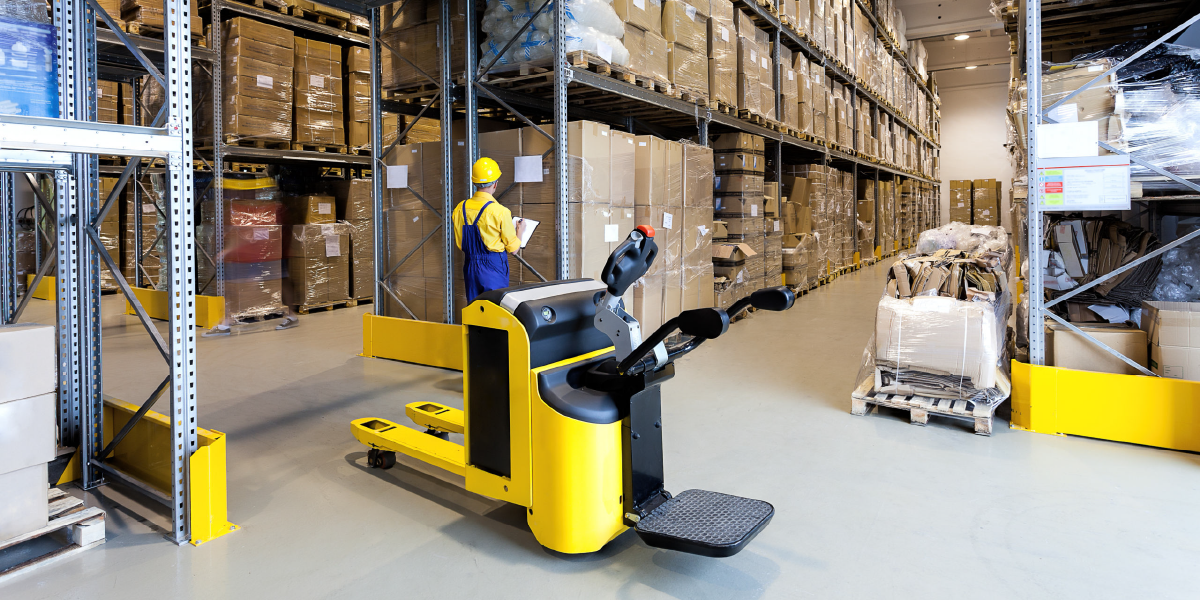
This is the second in a series of blogs discussing factors to consider when designing modern lift trucks.
Lift trucks in modern warehouses are being asked to do more in less space. As explained in our previous blog post, the cost of warehouse space continues to drive a wide range of changes in the warehousing industry. Higher ceilings, deeper racking (including deep-lane systems), and narrower aisles all place demands on the design and configuration of equipment used to operate safely and efficiently in today’s warehouse.
Safety First
Fundamentally, a safe lift truck design must not tip over! Pallet stackers, low lifters and rider trucks present little design risk in terms of their stability. The need for higher lift height and greater weight capacity increases the balance challenge placed on the design of counterbalance trucks, reach trucks, stock pickers and turret trucks. Designers must manage the placement of all components in the lift truck to maintain balance and provide counterweight for the lifted loads. Properly located weight also provides efficient traction.
Naturally, counterbalance weight requirements apply most specifically to counterbalance lift trucks, where all tip prevention is a result of the vehicle’s weight. The nature of narrow aisle reach trucks and very narrow aisle trucks and order pickers, designed with outer legs to help balance the load, makes the amount of counterbalance weight less crucial. However, the smaller footprint of these types of trucks is possible because the vehicle designer uses the front legs to move the tip point forward, and the presence and location of offset weight to balance the lifted load. Distributing weight well is still important for tip-safety and traction. Turret truck designs generally have relied on a combination of reach truck outer legs and significant counterbalance weight to prevent the elevated platform and operator from tipping!
Weight is the ally of a lift-truck designer. Lead-acid batteries offer substantial counterbalancing and traction weight in lift trucks. In many cases, lift truck designers moving towards lithium batteries without increasing energy storage capacity have needed to offset battery weight reductions with the addition of heavy steel plates or lead weights.
Increased Storage Capacity
Alternatively, the size and weight of the battery pack can remain the same if designers increase the storage capacity by a factor of about three! This has other implications in the areas of duty cycle and charging strategies. With increasing duty cycles, there is benefit to be gained from increasing energy storage capacity in any counterbalance lift truck, low lifter, pallet stacker, or narrow aisle reach truck. Lift trucks with lead-acid packs have often been limited in duty cycle and charge time requirements by the energy storage capacity allowed by their physical size constraints – that constraint can be eliminated by the deployment of lithium batteries. Equipping lithium powered lift trucks with on-board battery chargers allows for opportunity charging throughout the day. The development of robust battery chargers with high energy density makes onboard charging realistic.
High duty cycle warehouses with lead-acid battery systems deployed often operate with battery changing systems. Entire packs are removed from the lift truck, then charged and left to cool in racking until ready to be swapped back in. The additional batteries and changer cost money and occupy valuable space – the average ratio of packs to lift trucks is approximately 1.8:1. The use of higher capacity lithium packs combined with onboard chargers can save this valuable space. This solution is often deployed in a hybrid system where higher speed charging is also available from an offboard charger.
Constant development in lift truck technology helps the modern warehouse operate more efficiently. The commercial viability of lithium batteries in recent years has allowed a tremendous shift in the design of lift trucks, providing much greater flexibility in machine configuration to meet specific duty cycles. Managing space, weight and balance while maximizing vehicle run-time and duty cycle is now possible with lithium battery systems.




